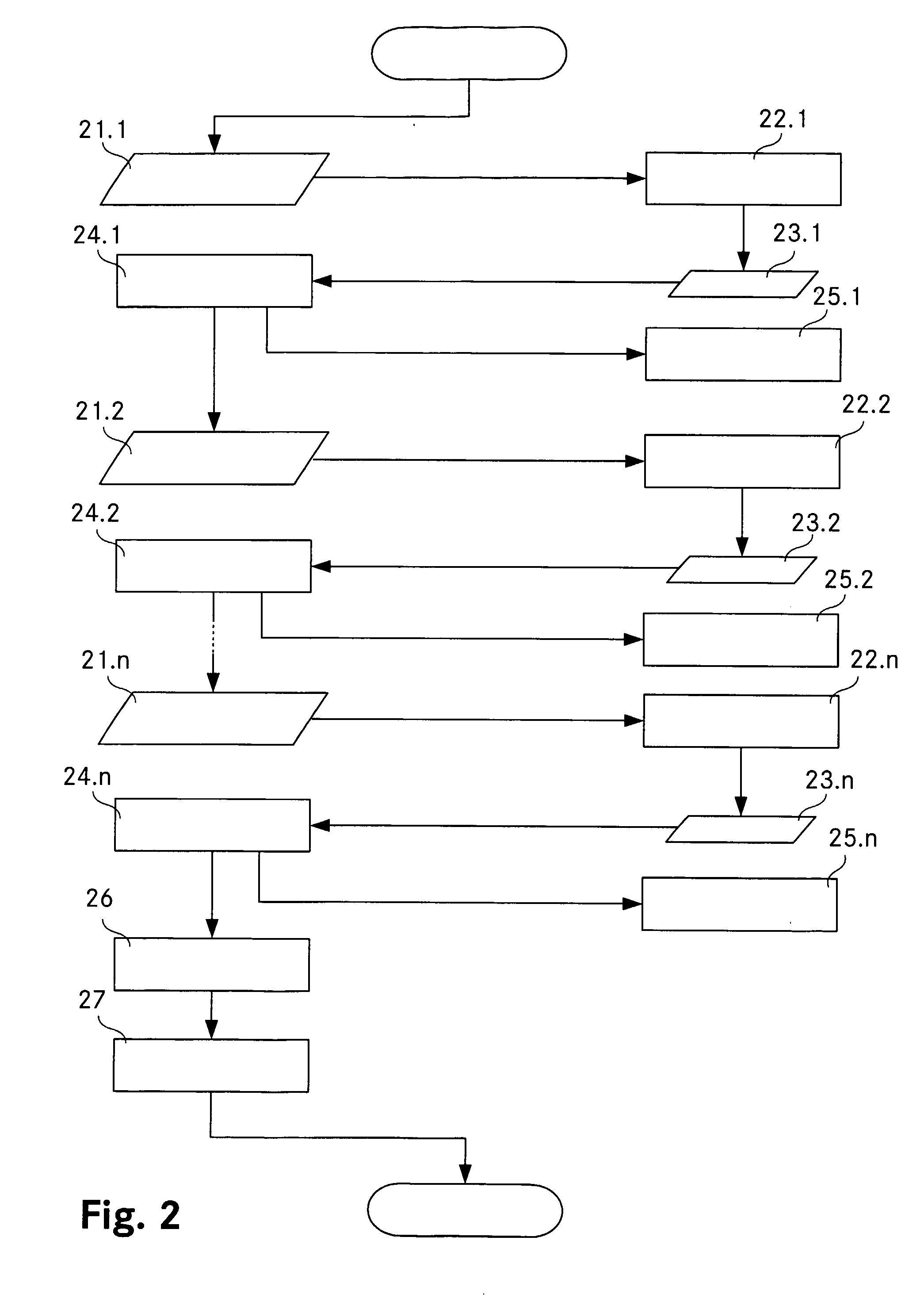Method of Testing a Cellular Network System
a cellular network and network technology, applied in the direction of network traffic/resource management, digital transmission, electrical equipment, etc., can solve problems such as network quality, and achieve the effect of reducing the use of network resources and reliable testing of network quality
- Summary
- Abstract
- Description
- Claims
- Application Information
AI Technical Summary
Benefits of technology
Problems solved by technology
Method used
Image
Examples
Embodiment Construction
[0046] The FIG. 1 is a flow chart representing the set up of a communication link in a cellular network in which the inventive method is applicable. The process steps carried out by the subscriber terminal are displayed on the left, the process steps carried out by the network management are displayed on the right. The set up process is initiated by the user terminal by sending a request 1 for a connection with another subscriber (of the same network or of another network connected to the cellular network) to the network management. Among other data, the request 1 contains the following information about the requested communication link: [0047] a. the destination (other subscriber); [0048] b. the type of service (voice, SMS, MMS, video telephony, data transfer, audio / video streaming etc.); [0049] c. the requested uplink data rate; [0050] d. the requested downlink data rate; [0051] e. the maximum transfer delay; [0052] f. the tolerable error rate; and / or [0053] g. any other parameter...
PUM
 Login to View More
Login to View More Abstract
Description
Claims
Application Information
 Login to View More
Login to View More - R&D
- Intellectual Property
- Life Sciences
- Materials
- Tech Scout
- Unparalleled Data Quality
- Higher Quality Content
- 60% Fewer Hallucinations
Browse by: Latest US Patents, China's latest patents, Technical Efficacy Thesaurus, Application Domain, Technology Topic, Popular Technical Reports.
© 2025 PatSnap. All rights reserved.Legal|Privacy policy|Modern Slavery Act Transparency Statement|Sitemap|About US| Contact US: help@patsnap.com



